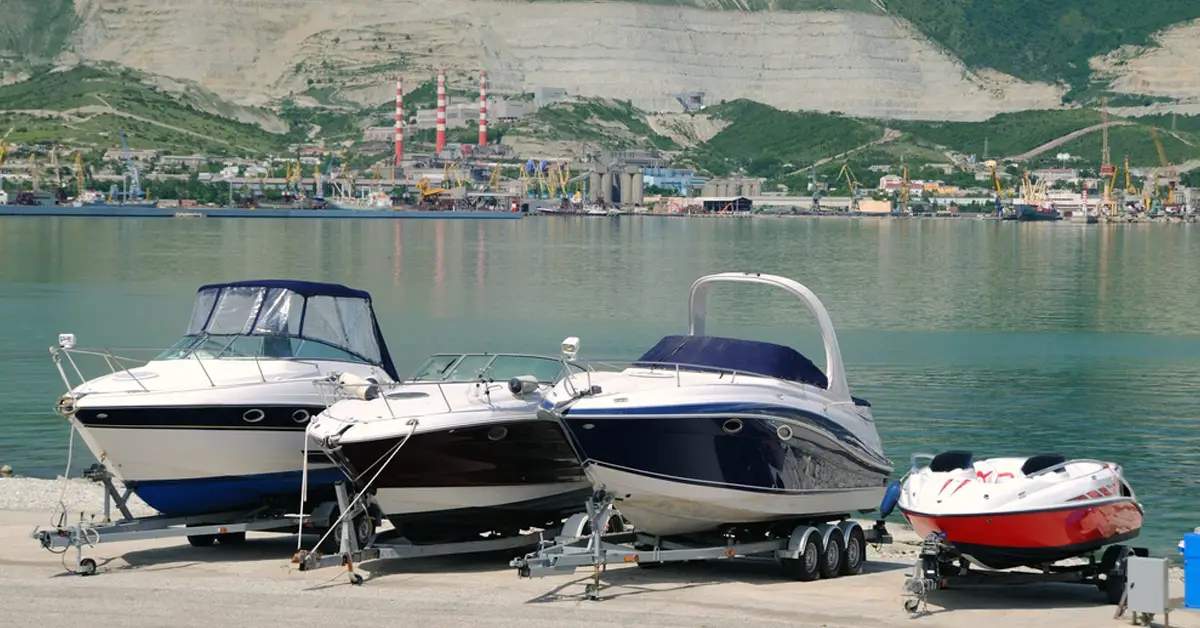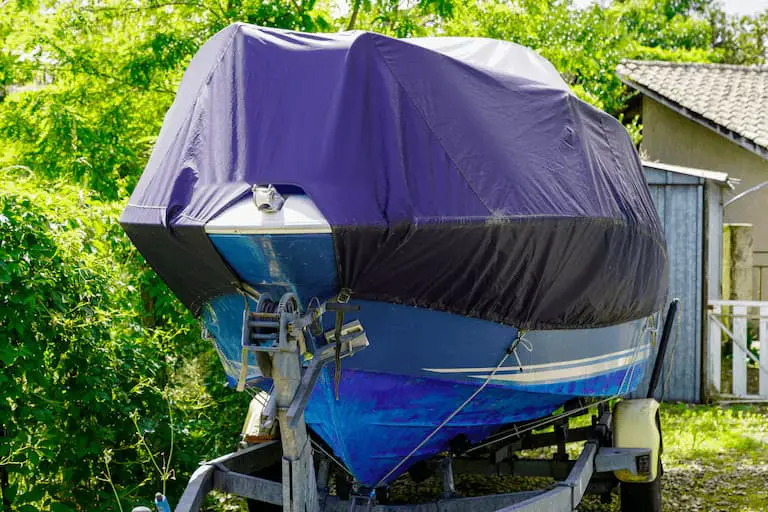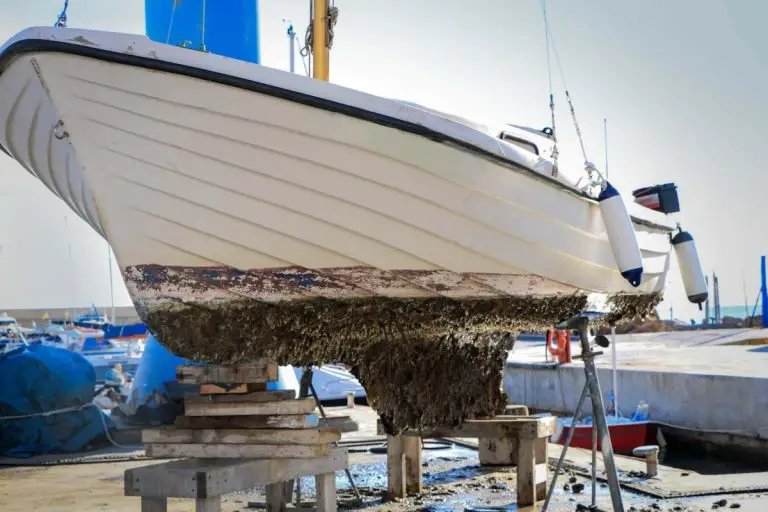What Is the First Thing You Should Do After Retrieving a Boat onto a Trailer? A Guide to Proper Boat Maintenance
Owning a boat is a thrilling experience that can provide countless hours of fun out on the water. But with ownership comes responsibility, especially regarding proper boat maintenance. Whether you’re a seasoned boater or a novice, taking care of your vessel is crucial to ensure it lasts for years.
One of the most critical aspects of boat maintenance is what you do immediately after retrieving your boat onto a trailer. This is when you can lay the foundation for proper upkeep and avoid costly repairs.
In this guide, we’ll explore the steps you should take to maintain your boat’s condition, from cleaning to inspection and everything in between. So, if you’re ready to learn how to protect your investment and get the most out of your boating experience, read on!
Why rinsing your boat after retrieval is important
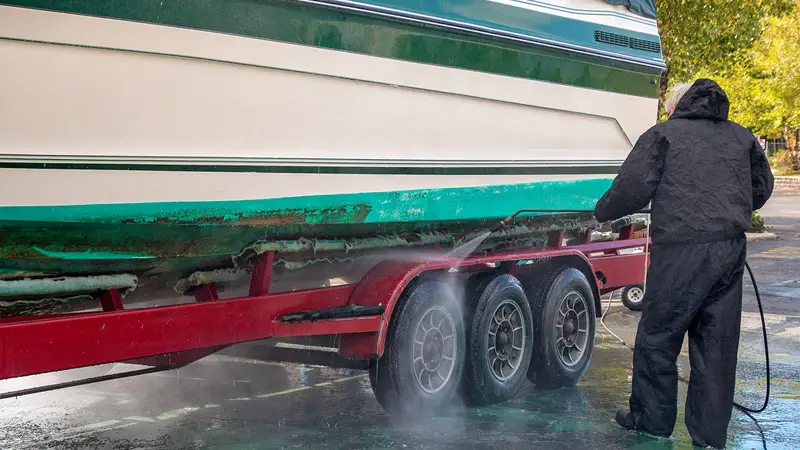
After a day out on the water, your boat is likely covered in salt, dirt, and other debris. Rinsing it with fresh water is crucial for preventing corrosion and maintaining its condition. Here are some of the reasons why rinsing your boat after retrieval is so important:
- Saltwater can be corrosive: Saltwater is highly corrosive and can damage your boat’s metal components over time. If left untreated, salt water can lead to rust, which can weaken your boat’s structure and lead to costly repairs.
- Dirt and debris can cause damage: Dirt, sand, and other debris can scratch your boat’s surface and damage its finish. This can not only impact the appearance of your boat but also compromise its performance over time.
- Preventing the spread of invasive species: Boats can inadvertently transport invasive species from one body of water to another. Rinsing your boat with fresh water can help to remove any potential contaminants and prevent the spread of invasive species.
- Easier to maintain: Regularly rinsing your boat with freshwater can make it easier to maintain in the long run. By removing salt and debris, you can reduce the need for deep cleaning and prevent issues from developing over time.
Rinsing your boat with fresh water after retrieval is critical in proper boat maintenance. It can help to prevent corrosion, protect your boat’s finish, prevent the spread of invasive species, and make it easier to maintain in the long run.
How to rinse your boat properly
Rinsing your boat properly is an important part of boat maintenance. Here are some steps you can follow to ensure you’re rinsing your boat effectively:
- Use freshwater: It’s important to use fresh water when rinsing your boat. This can be from a hose or a bucket, but it should not be saltwater.
- Start at the top: Begin by rinsing the top of your boat, including the windshield and any other areas where debris may have collected. This will prevent dirt and debris from falling onto areas you have rinsed.
- Move to the sides: After rinsing the top of your boat, move to the sides. Work from the bow (front) to the stern (back), and rinse all areas thoroughly.
- Pay attention to hard-to-reach areas: Don’t forget to rinse hard-to-reach areas, such as the underside of the boat, the propeller, and the outboard motor.
- Use a soft brush: If any stubborn spots don’t come off with a rinse, use a soft brush to gently scrub the area. Be careful not to use a too harsh brush, as this can damage your boat’s finish.
- Rinse thoroughly: After you’ve finished rinsing, make sure to rinse your boat thoroughly to remove any soap or debris.
- Dry your boat: After rinsing, dry your boat with a soft cloth or chamois. This will help to prevent water spots from forming.
Following these steps ensures you’re rinsing your boat properly and effectively, removing salt (if boating in saltwater) and debris from its surface. This will help to maintain your boat’s condition and prevent costly repairs down the line.
Inspecting your boat after retrieval

Inspecting your boat after retrieval is an important part of boat maintenance. Here are some steps you can follow to ensure you’re inspecting your boat effectively:
- Check for damage: Inspect your boat for any damage, such as cracks, chips, or scratches. Pay particular attention to the hull, which is your boat’s most important structural component.
- Check for loose or missing parts: Check your boat for any loose or missing parts, such as screws, bolts, or fittings. These can cause safety hazards if they come loose while you’re out on the water.
- Check the propeller: Inspect the propeller for any damage or debris. Ensure it’s secure and tight, and check for any fishing line or other debris that may have become wrapped around it.
- Check the electrical system: Inspect the system, including the battery and wiring, for any signs of wear or damage. Check that all electrical components, such as lights and pumps, function properly.
- Check the trailer: Inspect it for any damage or wear, and ensure it’s properly secured to your vehicle. Check that the tires are properly inflated and in good condition.
- Clean your boat: Once you’ve completed your inspection, take the time to clean your boat thoroughly. This will help to maintain its condition and prevent corrosion.
By following these steps, you can ensure that you’re inspecting your boat properly and identifying any issues before they become major problems. This will help keep your boat in good condition and ensure a safe and enjoyable boating experience.
Proper storage for your boat
Proper storage is a key component of boat maintenance, as it can help to protect your boat from damage and extend its lifespan. Here are some tips for proper boat storage:
- Choose a suitable storage location: When choosing a storage location, consider factors such as climate, security, and accessibility. Indoor storage is typically the best option, providing the most protection from the elements.
- Cover your boat: Cover your boat with a high-quality cover designed for your specific make and model. This will help to protect it from UV rays, rain, and other environmental factors.
- Store your boat off the ground: Storing your boat off the ground can help to prevent damage from pests and moisture. A boat lift or trailer is typically the best option.
- Remove any valuables: Before storing your boat, remove any valuables, such as electronics or fishing gear, to prevent theft.
- Winterize your boat: If you live in a region with particularly cold winters, it becomes very important to winterize your boat to protect it from freezing temperatures. This may include draining the water system and adding antifreeze.
- Maintain your battery: If you’re storing your boat for an extended period, maintain it by keeping it charged or removing and storing it separately.
- Check on your boat regularly: Even if you’re not using it, it’s important to check on it regularly to ensure it’s in good condition. This can help you identify any issues before they become major problems.
By following these tips, you can help to protect your boat from damage and extend its lifespan. Proper storage is crucial to boat maintenance, and storing your boat correctly can help you enjoy it for years.
Routine maintenance for your boat
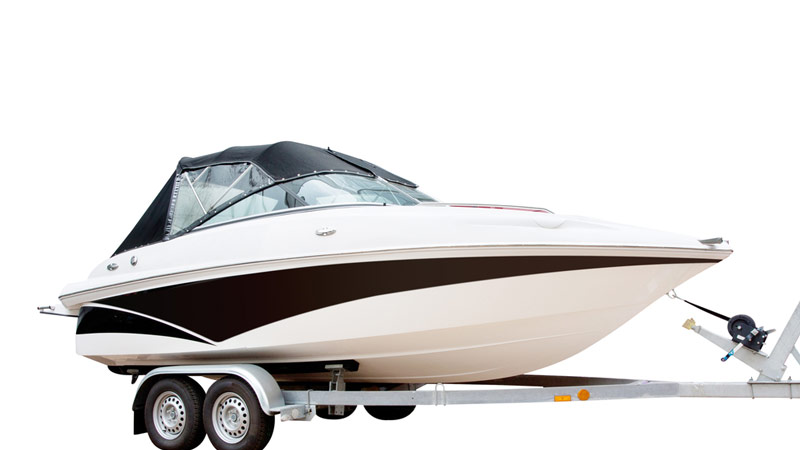
Routine maintenance is essential for keeping your boat in good condition and operating safely and efficiently. Here are some routine maintenance tasks you should perform regularly:
- Change the oil: Regularly changing the oil in your boat’s engine is crucial for keeping it running smoothly. Check your owner’s manual for the recommended oil change schedule.
- Check and replace filters: Check and replace the fuel, oil, and air filters as your owner’s manual recommends. A dirty filter can cause your engine to run poorly and decrease fuel efficiency.
- Inspect and clean the propeller: Inspect the propeller for any damage or debris and clean it regularly to maintain optimal performance.
- Check the hull and clean the bottom: Check the hull for damage and clean the bottom to remove any barnacles or other growth that can slow your boat down.
- Test and maintain the battery: Test it regularly according to the manufacturer’s recommendations.
- Lubricate moving parts: Lubricate any moving parts, such as hinges, steering components, and throttle cables, to prevent corrosion and ensure smooth operation.
- Check the safety equipment: Check the safety equipment, such as life jackets, flares, and fire extinguishers, to ensure they are in good condition and easily accessible.
By performing these routine maintenance tasks, you can help keep your boat in good condition and prevent costly repairs. Ensure to follow your owner’s manual for recommended maintenance schedules and procedures, and seek professional help if you’re unsure about any aspect of boat maintenance.
Common mistakes to avoid with boat maintenance
Boat maintenance is crucial for keeping your vessel in good condition, but it’s important to avoid common mistakes that can lead to costly repairs. Here are some mistakes to avoid with boat maintenance:
- Neglecting routine maintenance: Skipping routine maintenance tasks, such as oil changes and filter replacements, can lead to engine problems and other issues.
- Using the wrong products: The wrong cleaning or maintenance products can damage your boat’s finish and components. Make sure to use products that are specifically designed for your boat.
- Overlooking small issues: Ignoring small issues, such as leaks or strange noises, can lead to larger and more expensive problems down the line. Address any issues as soon as you notice them.
- Failing to winterize: If you live in an area with cold winters, failing to winterize your boat can cause damage from freezing temperatures. Make sure to properly winterize your boat before storing it for the season.
- Improper storage: Storing your boat in the wrong location or without proper covering and support can lead to damage from weather, pests, and other factors.
- Ignoring safety equipment: Neglecting safety equipment, such as life jackets and fire extinguishers, can lead to dangerous situations on the water.
- Attempting repairs without experience: Attempting repairs without the proper knowledge and experience can lead to further damage and safety hazards. Always seek professional help for complex repairs.
By avoiding these common mistakes, you can help to maintain your boat’s condition and avoid costly repairs. Follow your owner’s manual for recommended maintenance procedures and seek professional help when necessary.
When to seek professional help for boat maintenance
While boat owners can perform routine boat maintenance with some experience and the right tools, there are times when seeking professional help is necessary. One of the most important reasons to seek professional help is for complex repairs.
If you’re not experienced with boat repair or don’t have the right tools, attempting to fix complex issues on your own can cause further damage and potentially put you at risk on the water. Some examples of complex repairs that may require professional help include engine, electrical system, and structural repairs.
Engine repairs, for instance, can be especially challenging and require specialized knowledge and tools. Attempting to make such repairs on your own can lead to further damage and costly repairs.
Another situation in which you should seek professional help for boat maintenance is when planning major upgrades. If you’re planning to make major upgrades to your boat, such as installing a new engine or adding a navigation system, it’s best to seek professional help.
These types of upgrades can be complex and require specialized knowledge and tools. Professional boat mechanics and technicians have the training and expertise to perform upgrades correctly and safely. They can also advise on the best products and practices to ensure your boat’s longevity and efficiency.

